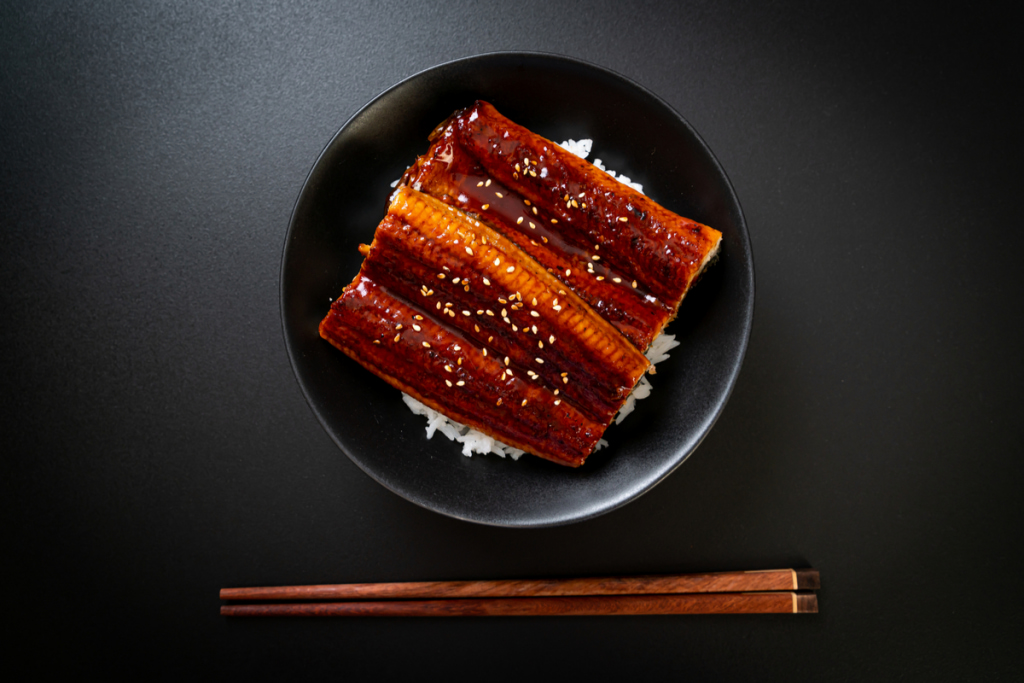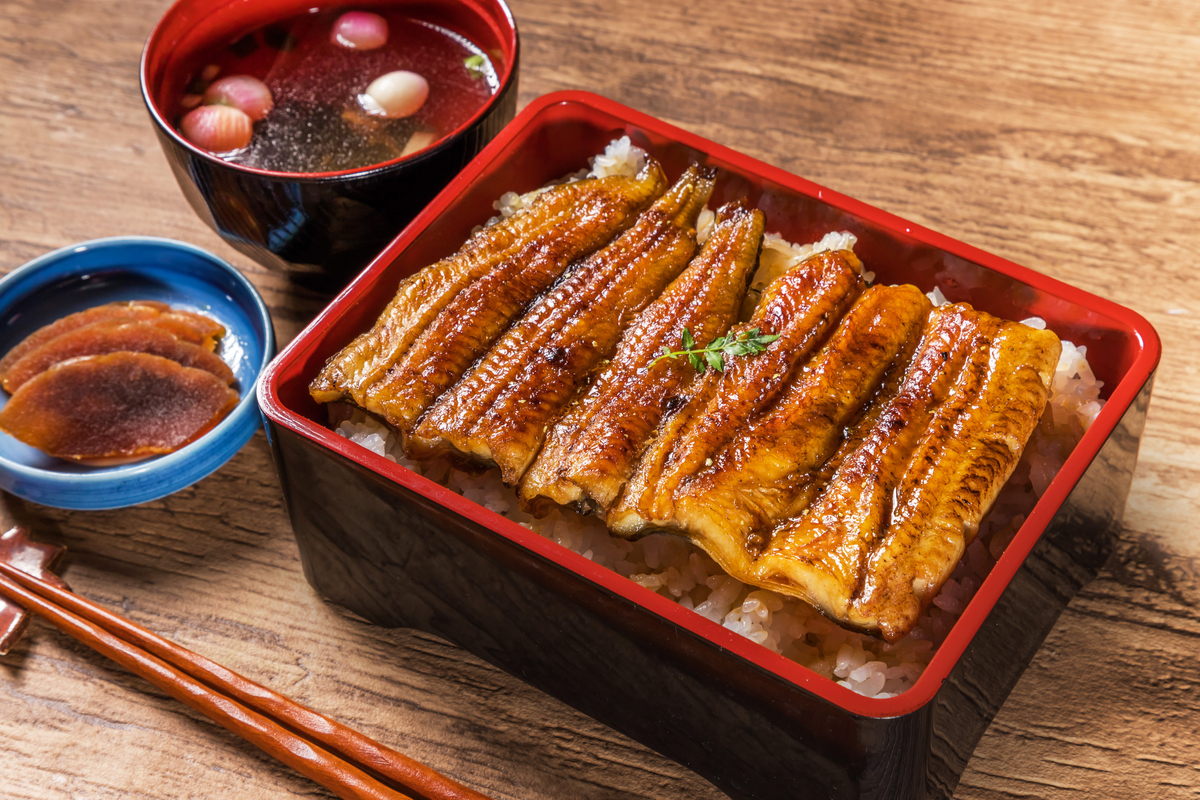As the scorching hot Japanese summer days are fast approaching, our appetite naturally shifts to foods that can help us cool down: cold soups, salads, fresh fruit, vegetables — ice cream. But while all those are everywhere to be found in the summer in Japan, so is one rather surprising dish — grilled unagi (freshwater eel) served on a bed of steaming hot rice. Not exactly what you’d imagine you’d want on a sweltering summer day. But eating Japanese eel in summer has been a tradition for centuries now and there is even a day (or two) dedicated to it.
But how did the tradition start — and why is eel such a popular summer treat in Japan?
Doyo no ushi no Hi: Marketing at its best
Doyo no Ushi no Hi (土用丑の日), the days of the year for the customary meal of unagi, falls on July 28 in 2021. Doyo denotes the 18 or 19 days before the beginning of each season according to the traditional lunisolar calendar – this is an adjustment period of sorts as you enter each season. The summer Doyo is said to be the hottest time of the year. Ushi no Hi refers to the day of the ox (the second sign in the Chinese zodiac cycle of 12 signs). So Doyo no Ushi no Hi is the day of the ox within the Doyo period.
View this post on Instagram
An illustration of Hiraga Gennai holding an eel. It reads: “Today is Doyo no Ushi no Hi”
What does eel have to do with the day of the ox? The custom of eating unagi on these days is believed to have started in the 18th-century mid-Edo period. The strapped owner of an unagi shop, struggling to get customers in the muggy heat (unagi was considered a winter dish at the time), consulted polymath samurai Hiraga Gennai who gave him a quick marketing lesson: hang a sign outside the restaurant telling people that it was Ushi no Hi so they should eat food that starts with “u” to escape the heat. The owner started advertising as instructed, step by step spreading the idea that “u” foods were good for the health, especially at the turn of the season when you’re prone to get sick and when you’re suffering from heat fatigue. This summer heat fatigue, called natsubate, can bring about malnourishment and lethargy, and unagi is a hearty, nutritious, stamina-replenishing solution. Business boomed, other unagi stores quickly followed suit and the rest is history — to this day Japanese supermarkets and restaurants celebrate the season with extra eel.
Health benefits of unagi
Marketing aside, the fact that unagi is full of vitamins and minerals is not an exaggeration. Packed with protein, omega-3, vitamin E, calcium, vitamin A and phosphorus, among other nutrients, unagi is also believed to have the highest amount of unsaturated fatty acids than any other sea creature. The omega-3 fatty acid in unagi could help improve blood pressure, lower cholesterol, maintain bone health and even relieve menstrual pain. This and vitamin A are believed to reduce wrinkles and keep the skin supple as well. Studies on unagi’s health benefits have also suggested that eating the eel regularly in recommended portions could reduce the risks of breast cancer, improving blood flow to the brain, improving memory and learning, and possibly reducing the risk of dementia.
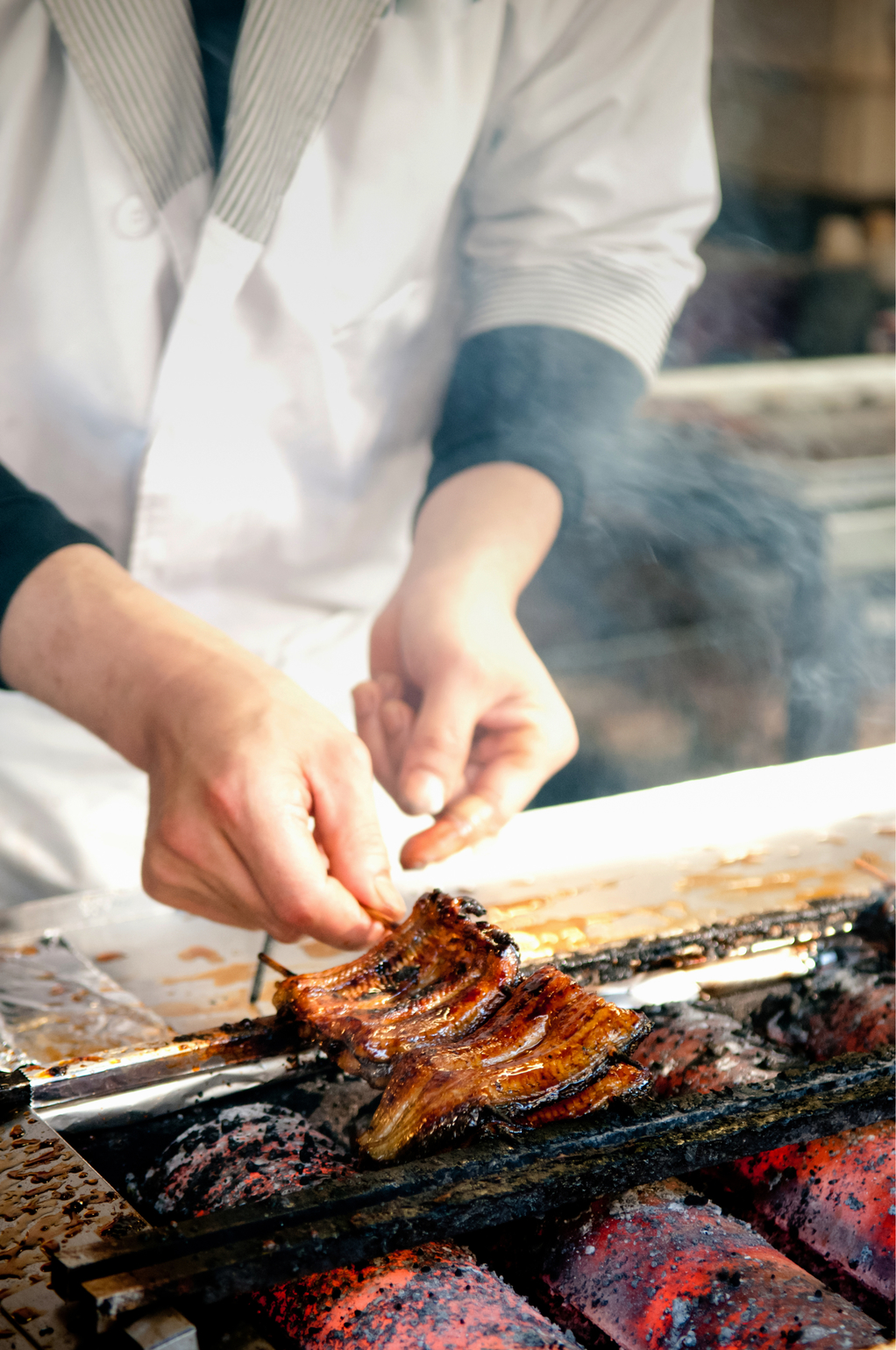
The health benefits, then, as you’re already guessing right, aren’t limited to a boost in energy in the grogginess of July; they could be lifelong. Some of the effects may not be immediately palpable, but it is in the lore that unagi increases your virility, and at least lifts your spirits.
Popular unagi dishes (and where to try them)
There are, of course, variations of grilled unagi. Unaju (鰻重), one of the most popular dishes, is grilled unagi covered in sweet tare (sauce), served on rice in a lacquerware box. The sweet-savory sauce is perfect with sansho, which is spicy and citric.
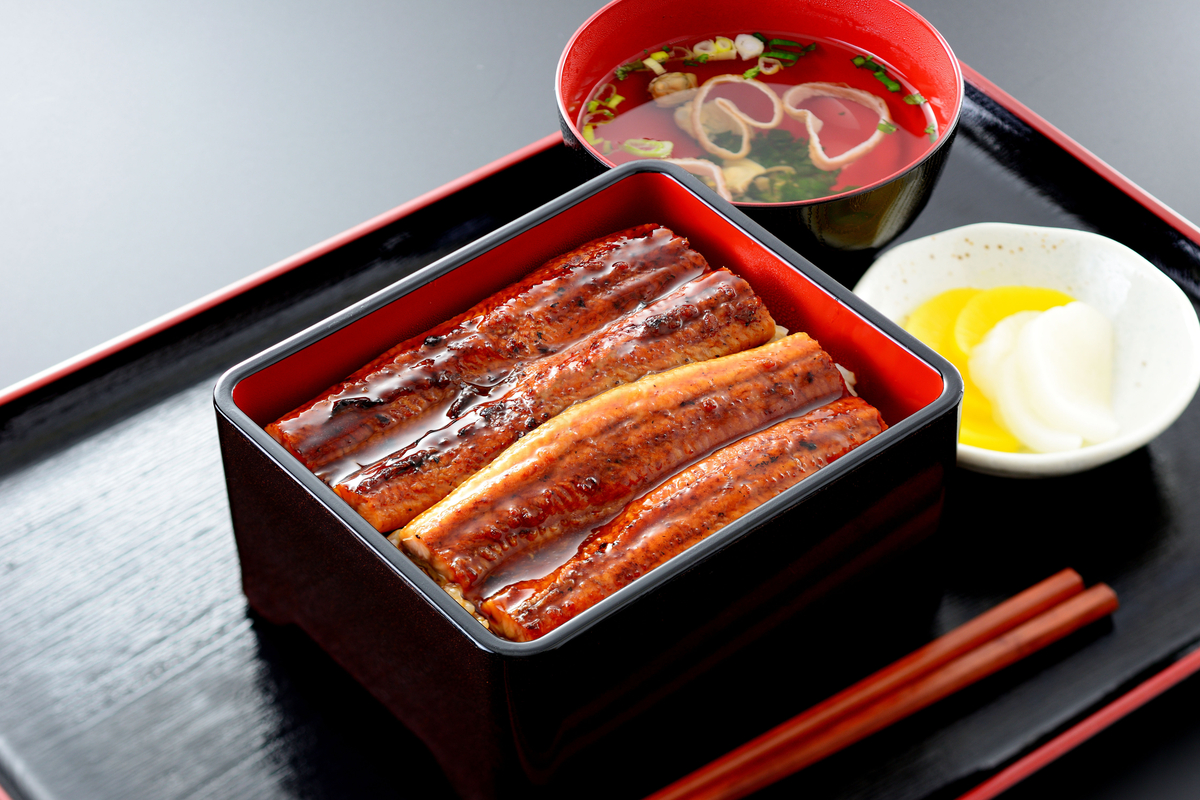
Unaju served with osuimono (soup) and Japanese pickles
Kabayaki (蒲焼) refers to a cooking method in which eel is slit open, butterflied, skewered, dipped into tare and grilled slowly over a charcoal fire. The method originated in Urawa, Saitama Prefecture. Unagi onigiri or unagi sushi are also common bites you can try — even at your local convenience store.
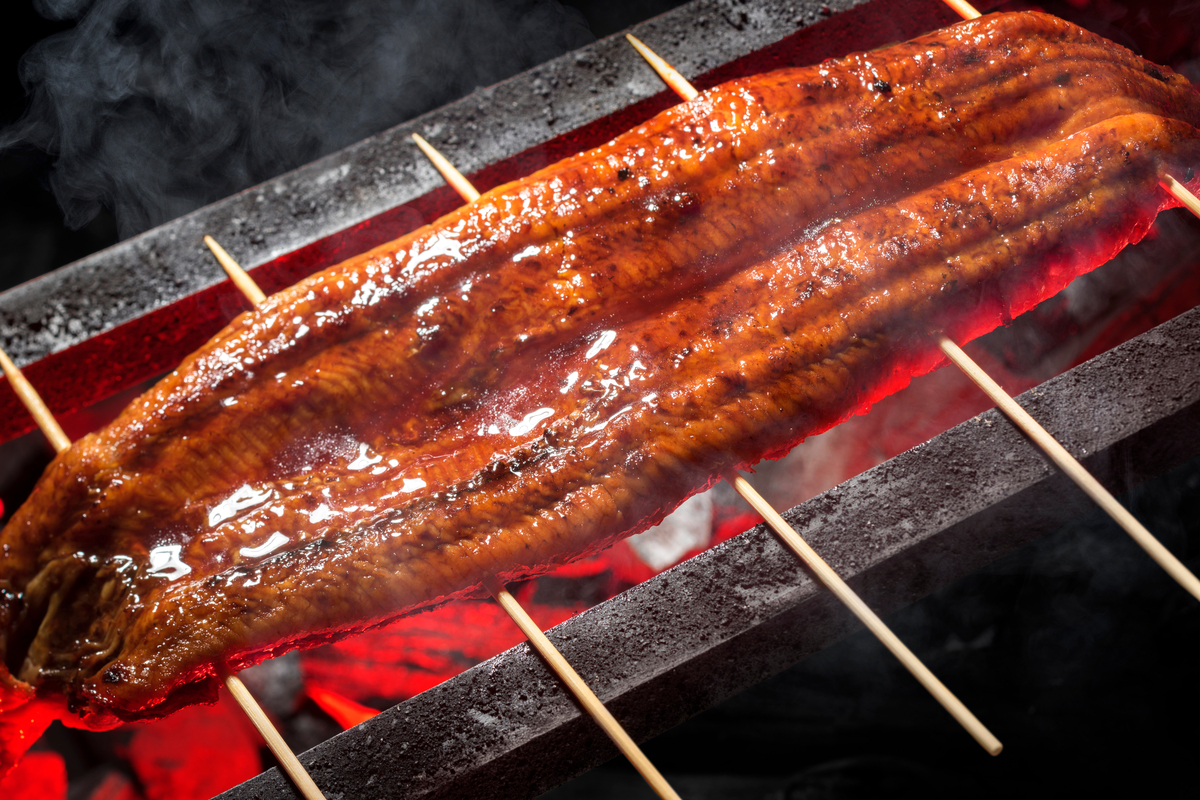
Kabayaki
But if you’re in for trying the real thing (and paying a bit more for lunch as this power food doesn’t come cheap), check out the following recommended places.
Unagi Musashino in Urawa, Saitama, is one of the best-known unagi restaurants in the Kanto region. It has been running for over 60 years and using only the best quality domestic eels. The chef takes pride in removing even the tiniest bones from the unagi prior to grilling it over binchotan charcoal, ensuring not only throughout safety to their customers but also extra fluffiness. Map
Roryuan, a Meiji honeymoon home-turned-restaurant in scenic Hakone, likewise serves unagi-don in lacquerware, with carefully selected eel washed in the waters of Tamadare Falls (the water is said to prolong your life). Each bowl comes with three seasonal dishes; you can expect other summer specialties like goya, which has cooling effects and balances the moisture in your body. The lightness and delicacy of the appetizers pair perfectly with the rich, fatty main dish (or bowl). Map
While these Kanto-style eel dishes are steamed to increase their tenderness and remove excess oil, Kansai-style unagi is only grilled, to the effect of a firmer and fattier fish. If you don’t mind the wait (with reservations being made around a year in advance), Kabuto (pictured below), in Ikebukuro, is said to be one of the best unagi spots in Japan, with Kansai-style shiro-yaki (白焼) (which has no sauce), Kanto-style plates and other delicacies making use of eel head, tail and innards. This is a small shop where drinks are replete and the fish is cooked before you. Stake out this site to obtain a reservation, perhaps for next year’s Doyo no Ushi no Hi — this is a popular spot.
View this post on Instagram
Noboritei, with two stores in Ginza, one in Shinjuku and one in Ueno, is also a popular and relatively reasonably-priced chain dedicated to the dish. The first Noboritei store opened in Nihonbashi in 1952, managing to further popularize the dish by changing its high-end cuisine image by selling “100-yen” unagi rice bowls. At Noboritei, you’ll also be served unagi soup and unagi bones as a snack — which is quite good too!
Eel is known not only for being delicious but also for its lofty prices, especially in recent years as eel stocks dwindle – so try to get restaurant-grade when it’s still somewhat accessible. This year saw a bumper catch of glass eels, which means domestic unagi is cheaper than on the last Doyo no Ushi no Hi.
If you’re wary of dining in a restaurant, consider ordering from a supermarket. Some Aeon branches, for example, have set up unagi corners. You can even purchase grilled eel at convenience stores and, of course, opt for unagi sushi. Whichever way you choose to indulge, know that you’re nourishing the body and soul.
Updated On August 18, 2021

